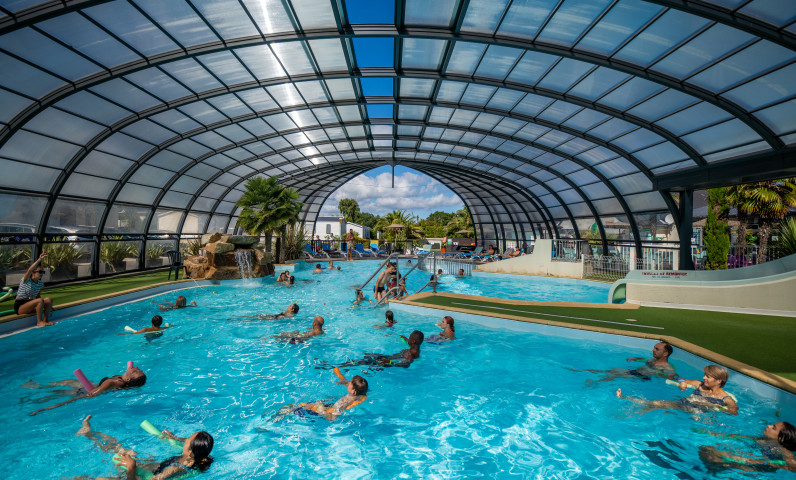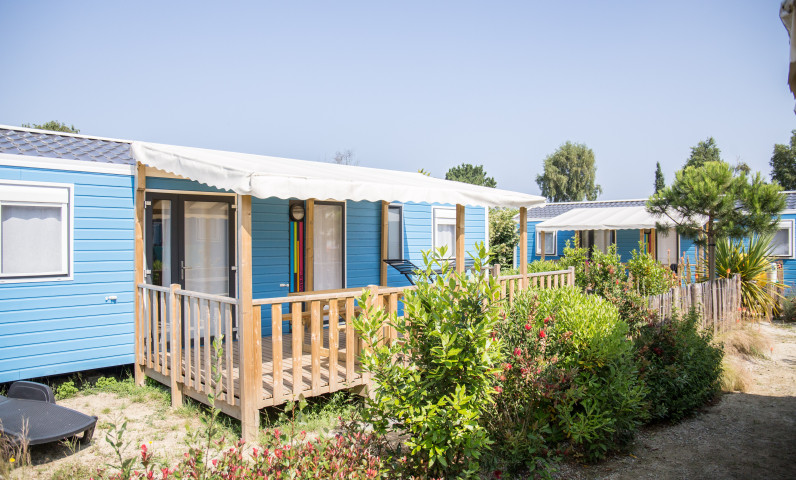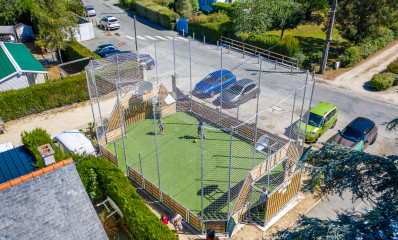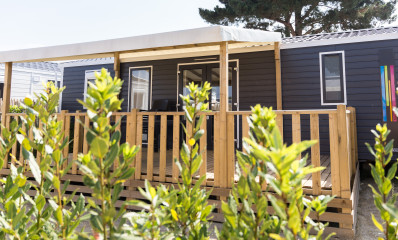Visiting Ille-et-Vilaine
Have you just booked a stay at the Emeraude campground in Saint Briac sur Mer, Ille-et-Vilaine? You can enjoy not only the campground but also the surrounding area by discovering the many places to visit. The department of Ille-et-Vilaine is full of activities to do and corners to explore. Discover the top 10 must-visit sites in Ille-et-Vilaine, whether as a couple, with family, or with friends.
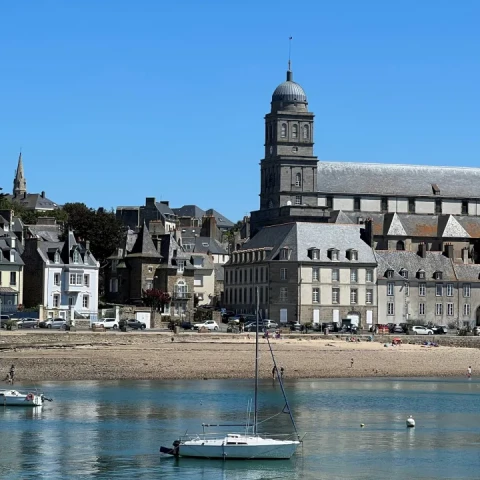
Plan your stay in Ille-et-Vilaine
Part of Upper Brittany, Ille-et-Vilaine charms visitors with its diverse landscapes and rich heritage. Book a last-minute campsite stay in Ille-et-Vilaine and take in the breathtaking sight of the Emerald Coast's high tides, the legends of Brocéliande, the pirate stronghold of Saint-Malo, the cultural treasures of Rennes, and the famous oysters of Cancale. Ille-et-Vilaine encapsulates the very soul of Brittany. It invites you to urban tourism and water sports, savoring seafood along the English Channel, boating on the Rance, hiking through dense forests, shellfish gathering on Cancale’s tidal flats, relaxing on the beaches, or exploring medieval towns.
Ille-et-Vilaine by the Sea
From the Rance estuary to the gates of Mont-Saint-Michel, Ille-et-Vilaine boasts some of the most beautiful coastal landscapes in Brittany. The ramparts of Saint-Malo, the Pointe du Grouin—marking the start of the Route du Rhum—the elegant beaches of Dinard, and the harbor of Cancale are exceptional sites renowned far beyond France's borders.
The Emerald Coast unfolds its stunning coves across neighboring Côtes-d’Armor, from Lancieux to Saint-Jacut-de-la-Mer, Saint-Cast-le-Guildo, and all the way to Cap Fréhel.
Just a few kilometers to the west, facing Saint-Briac and the Île Agot, stands the medieval fortress of Fort la Latte.
The 10 Must-See Sites in Ille-et-Vilaine
- Rennes: The capital of Brittany, known for its medieval half-timbered houses, festive atmosphere, and vibrant cultural scene. Notable landmarks include the Palace of the Parliament of Brittany.
- The Fougères region, northeast of Rennes: Home to the largest fortress in Europe, the medieval city of Fougères is surrounded by other renowned historical sites like the Château du Rocher Portail and the Château de Bonnefontaine in Antrain.
- The medieval towns of Vitré, Combourg, Dol-de-Bretagne, Châteaugiron, Dinan, and the nearby village of Léhon can be explored at your own pace or with a guide. Expect timber-framed houses, cobbled streets, centuries-old religious buildings, and medieval fairs and markets.
- The Bay of Mont-Saint-Michel: Straddling Brittany and the Cotentin Peninsula, this UNESCO World Heritage Site includes much of the bay, from Cancale to the salt marshes of Mont-Saint-Michel, through Saint-Benoît-des-Ondes, Hirel, and Le Vivier-sur-Mer, all located in Ille-et-Vilaine.
- Brocéliande: Forever linked to Arthurian legend and the adventures of the Knights of the Round Table, the forest of Brocéliande is a must-visit in Brittany. Located southwest of Rennes, it features legendary sites such as Merlin's tomb, the Valley of No Return, Viviane's House, and the Fountain of Youth.
- River cruises on the Rance, the Vilaine, and Brittany's canals: Departing from Dinan, Saint-Suliac, Redon, or Guipry-Messac, these cruises showcase the landscapes of inland Brittany and its many locks.
- Cancale: Overlooking the mythical bay opposite Mont-Saint-Michel, this small port is famous for its oysters. Take the coastal path to the Pointe du Grouin to appreciate its exceptional natural beauty.
- Dinard: Known as the "garden city by the sea," Dinard features elegant Belle Époque mansions, gardens, and seaside promenades, making it a symbol of the Emerald Coast.
- The Corsair City of Saint-Malo: Situated at the mouth of the Rance River, this fortified city boasts towers and ramparts facing the sea. At low tide, the beaches stretch out to the forts of Petit Bé and Grand Bé. Inside the walls, charming streets and tall historic houses invite exploration.
- Redon: Surrounded by star-shaped marshlands and traversed by the Oust and Vilaine rivers, Redon is an ideal starting point for boat trips. Don't miss the Saint-Sauveur Abbey, one of the most significant Benedictine abbeys of the medieval period, the Richelieu Hotel, or the Château du Mail.
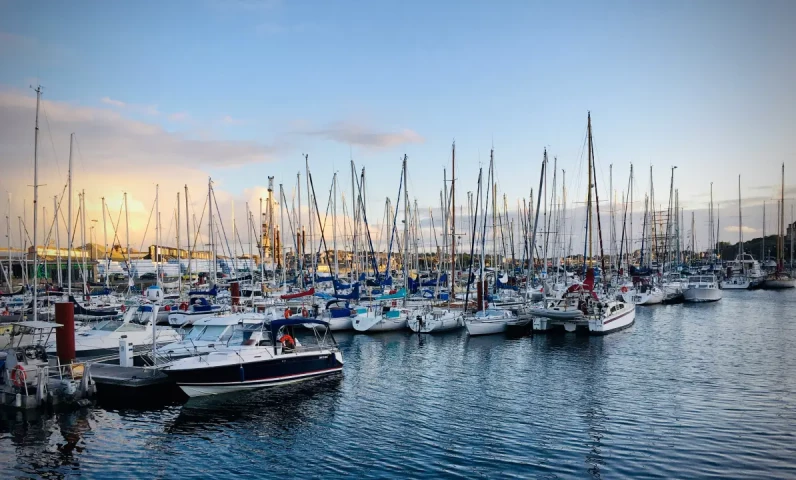
Saint-Malo, the Corsair City
Saint-Malo, the starting point of the Route du Rhum (2026), the prestigious solo transatlantic sailing race, boasts a rich cultural heritage. The corsair city is home to more than 80 historic monuments, most of which are located in the intra-muros area. Explore the castle, Saint-Vincent Cathedral, the ramparts, gates, and posterns that recall how the people of Saint-Malo once had to defend themselves against pirates. Saint-Malo hosts fascinating festivals every year, such as the Route du Rock and Quai des Bulles (comic books). If you're traveling with children, the Grand Aquarium of Saint-Malo will delight the whole family.
Dinard
Located about 6 km from Camping Emeraude, the seaside resort of Dinard first charmed British tourists in the mid-19th century. The villas, pier, and casino along the seafront lend it a special charm and Belle Époque style, making it well worth a visit. Its proximity to the campsite near Saint-Malo ensures an ideal day trip.

Château de Fougères
The Château de Fougères, northeast of Rennes, is one of the most beautiful medieval fortresses in France. Built between the 12th and 15th centuries, it stands out for the excellent preservation of its towers and ramparts. Spanning over 400 years of history, this structure is a magnificent example of military architecture.
Pointe du Grouin
The Pointe du Grouin, located between Saint-Malo and Cancale, is one of the most stunning natural sites on the Breton coast. It offers breathtaking panoramic views of the Mont-Saint-Michel Bay on one side and Cape Fréhel on the other. Several trails allow you to walk along the coast and breathe in the refreshing sea air.

Museum of Fine Arts of Rennes
The Museum of Fine Arts in Brittany's prefecture houses remarkable artistic and archaeological collections. Easily accessible by metro, it takes you on a journey across the globe and through different eras, from Roman antiquities to 20th-century paintings.
Zoo and Château de la Bourbansais in Ille-et-Vilaine
This zoological park, located between Rennes and Saint-Malo (in Pleugueneuc), was established in 1965 next to the château of the same name. During your visit, you’ll encounter 500 animals and wander through the château gardens on a 10-hectare estate. For a small additional fee, you can also tour the château.
Château de Vitré
Like the Château de Fougères, the Château de Vitré (11th century) is a fortified castle listed as a historic monument. It boasts beautiful towers, including the Saint-Laurent Tower, which once housed the governor’s residence.

Brocéliande Forest
The Paimpont Forest, also known as Brocéliande, is the enchanted woodland where Merlin the Enchanter, the Lady of the Lake, King Arthur, and the Knights of the Round Table pursued their quest for the Holy Grail. Guided tours and storytelling sessions, organized year-round by the tourist offices of Paimpont and Tréhorenteuc, introduce visitors to the forest’s legendary landmarks: Merlin’s Tomb, the Valley of No Return, the Golden Tree, and the Barenton Fountain.
La Roche-aux-Fées
Like much of Brittany, the Ille-et-Vilaine department is dotted with Neolithic sites. La Roche-aux-Fées in Essé is one of the best-preserved dolmens in the region. Its history is steeped in legends that captivate visitors of all ages.
Thabor Park
After visiting the Museum of Fine Arts and the Parliament of Brittany in Rennes, unwind at Thabor Park. This botanical garden is the perfect spot to relax amidst flowers and greenery during your day in Rennes, before heading to your luxury accommodation at Camping Emeraude in Briac-sur-Mer. Plan your vacation with the Ille-et-Vilaine tourism office.








